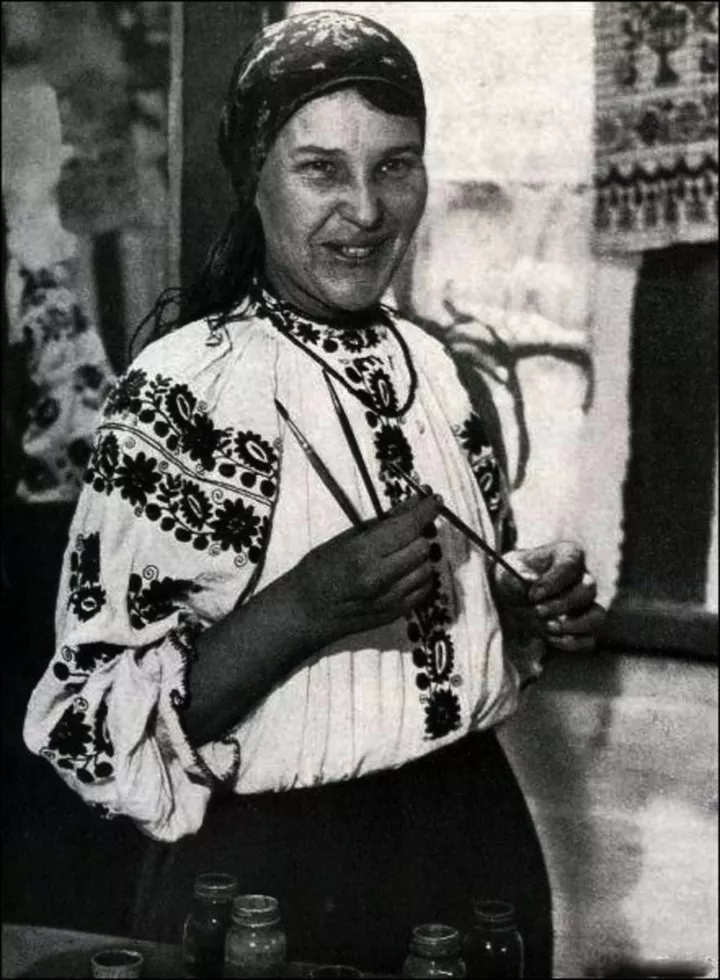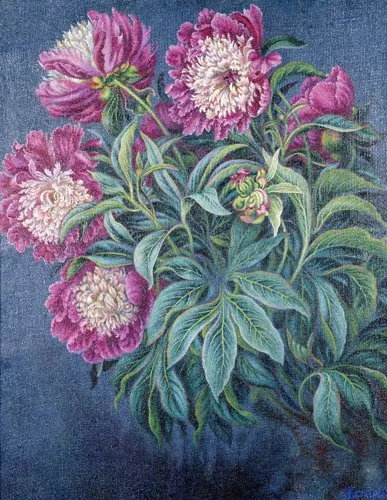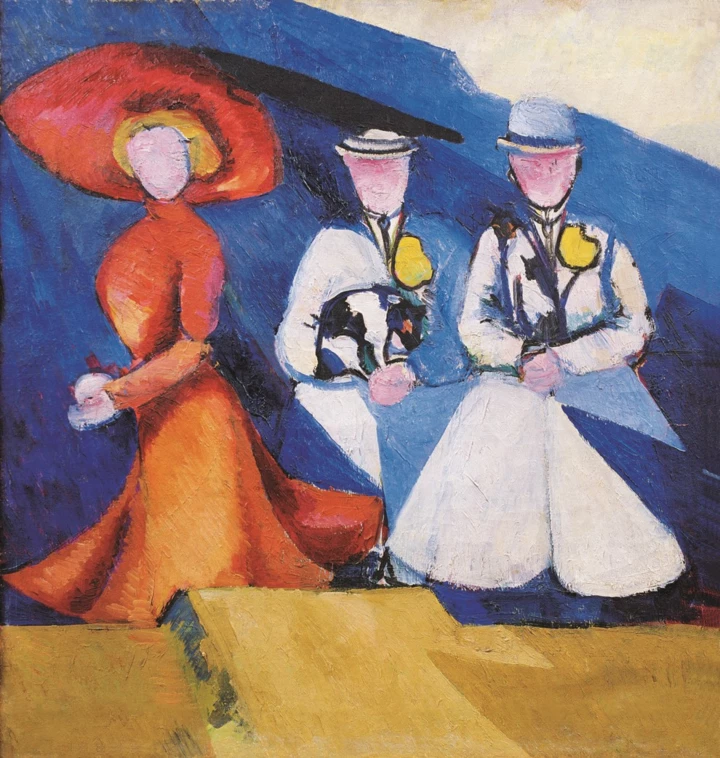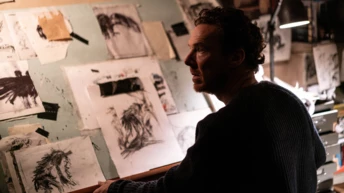The 12th of August is celebrated as Artist's Day in Ukraine. We have a wealth of ingenious Ukrainian mitsi and myths, the works of which can be seen in museums from New York to Kiev.
Maria Prymachenko

“It all started like this,” the artist guessed, “as if in my hut, above the river, on a zucchini meadow, I was herding geese. I painted all sorts of flowers that I was painting on the sand. floor and painted our house…”
Advertising.
Popular among the world, the Ukrainian artist grew up in the village of Bolotnya in the Kiev region. The homeland of the Primachenkos was incredibly creative: my father worked as a weaver, created courtyard fences, my grandmother painted Easter eggs, my mother was famous for her craftsmanship in embroidery. Maria's mystical path began with the painting of her lordly house – this was so fitting for the neighbors that they began to beg young Maria to “decorate” their house. At this hour, Maria was buried in embroidered towels and clothes, making them for herself and for her neighbors and acquaintances.
In 1936, Maria joined the experimental workshop at the Kiev Museum of Ukrainian Mysticism, where she received an artistic education. 1936 became a landmark year for the artist’s career . Then there was an All-Ukrainian exhibition of folk art, where “Beasts from the Swamp” were exhibited. Maria became visible. She was awarded a 1st level diploma. In 1937, a group of their robots appeared at the International Exhibition in Paris. And then in Warsaw, Sofia, Montreal, Prague. Articles in periodicals, magazines, and museums began to acquire the artist’s works. Shvidko Primachenko became famous all over the world, and Pablo Picasso and Marc Chagall were inundated with her creativity.
Today in Maria Primachenko's delivery – over 3000 robots. Juicy, nasichenі colors; fantastic stories with weird animals in the lead roles; The essence of nature is an absolutely vital force – such is the myth of Maria Primachenko, which after 114 years after the birth of the artist loses its relevance. In 2017, the Prymachenko Family Foundation was founded, which is dedicated to the popularization, protection and protection of the myth of Maria Prymachenko. The Foundation supports and expands the mysticism of Maria’s son Fyodor Prymachenko, who is also the head teacher of Ivan Prymachenko, and also “continues” the creativity of Prymachenko – for example, whose foundation has released a collection of art with Mystkin robots in collaboration with the RCR khomenko brand.
Katerina Bilokur

“I stole a piece of white linen from my mother and took the coal… And I’ll paint something on one side of the linen, I’ll be amazed, I’ll have mercy, I’ll turn it over to the other side – and there they are. I scrawled not the view, but all the different birds I saw… My soul was happy because I was so crazy about seeing that little one, and laughed like a god… “
Like Maria Prymachenko, the well-known Ukrainian artist Katerina Bilokur , whom collectors and price dealers crave in this world today, was self-taught. Blonkur grew up in her rural homeland in the Poltava region and the first babies worked with materials at hand: painted the vugillas that she found in her mother’s kitchen, on fabric, or simply on the ground with a stick. In 1922, when she was 22 years old, she tried to enter the Mirgorod Technical College of Artistic Ceramics, but was not accepted. For a number of fates, the same thing happened again – even though Katerina was trying to enroll in the theater college in Kiev.

A special role was played by the opera singer Oksana Petrusenko. In 1940, Belokur's family wrote a sheet of it and added it to her new little viburnum. The little one so impressed the little girl that she knew Katerina so that she could get to know the talented artist in a special way. In 1940, in Poltava, amid Petrusenko’s activity, a personal exhibition of Bilokur was held. After this, its share became quite interesting : its exhibitions were held in the same Union, and in 1954 it took part in the International Exhibition in Paris, where its robots were buried in the past and Picasso. “If we had an artist of such a level of mastery, we would dare to talk about her to the whole world,” said Vine.
Paintings, incredibly bright, voluminous , lively – such were the flowers on her canvases. And until now, they have been displaying a fantastic display of hostility—it’s simply impossible to take your eyes off them.
Oleksandr Bogomazov

“There is a new concept on this road, that there hangs an independent artistry of the element of painting, like the wearer of the Artist’s signature.”
If you were at the National Art Museum in Kiev, you definitely saw the masterpieces of Oleksandr Bogomazov, one of the most important representatives of the Ukrainian avant-garde. Oleksandr Bogomazov started out at the earliest: at the Kiev Art School his mentors were Oleksandr Murashko and Mikola Pymonenko. In the history of the world, Bogomazov is known as an experimenter: in the 1910s he became obsessed with impressionism, in 1913-1917 – with cubo-futurism and having fallen asleep in Kiev, and in the 1920s – spectralism . At the same time, Bogomazov is devastated by the Kiev Art Institute.

Ukrainian Picasso – that’s what Oleksandr Bogomazov was called both in the Fatherland and later in the world. Bogomazov was a leading revolutionary artist, in whose creativity one of the main roles is played by form and line, as well as their dynamics. Bogomazov's programmatic TV series is “Practia of the Polars ” ( 1927-1930 ). The artist decided to create two paintings in the cycle – ” Pilary ” ( 1927-1929 ) and “Editing Files” (1927). These robots spent a very long time undergoing restoration at NAMU , but a few of them can still be seen within the walls of NAMU . But the artist did not manage to paint the third painting, “Rolling the Deck” ( 1927-1930 ), and we know about it in many sketches, which can also be seen in museums. Today, Oleksandr Bogomazov’s works are exhibited in museums and private collections in London, New York, Venice, Zurich, Tokyo, and San Francisco .
Alexandra Exter

An intellectual and a true participant in the Ukrainian avant-garde, a glimpse of the kind of camaraderie that she has achieved, both artistic and secular, an artist and designer, a talented master of scenography – Oleksandra Exter is not a small peer. Already at the beginning of the 20th century, the Ukrainian artist Oleksandra Ekster was well known in collaborations . At her little house in Kiev, Exter organized an artistic workshop where representatives of the avant-garde were gathered – she used to work so hard in any place, where she lived, either in Odessa or in Paris. Not only artists were recruited from Kiev’s workshop of arts and crafts; Exter created costumes and sets for the dance troupe “School of the Ruhu” by Bronislava Nijinska from this workshop. It’s important that Exter herself brought cubo-futurism to Kiev. In 1907, she visited Paris for the first time, met Picasso and his “Les Demoiselles d'Avignon “, and after returning to Kiev in 1908, she was in charge of the exhibition of the new mystery “Lanka” with Bogomazov and Burliuk – however, the local public did not appreciate it.

One of the most famous works is “Three Women’s Figures” from the NAMU collection, which Alexandra Exter created for herself together with her friends Pribilskaya and Davidova. Davidova in the village of Verbivka, Poltava region, was ruled by the artillery, and the masters worked on embroidery for sketches of Ukrainian artists (Malevich, Rozanova, Udaltsova ). The idea of getting the cutting edge to the avant-garde lay with Exter , who had been working on the art director’s schedule since 1913. Exter rose in price greatly: it rose in Kiev, traveled to Paris for 25 years, and sold in Italy, France, Ukraine, Great Britain, Germany. Her creativity and she herself did not know between – either geographical or mystical: her paintings and dance, fashion and design, books and interior design.
This fall and winter, Exter’s work can be seen at the Ukrainian Museum in New York, where the exhibition “Alexandra Exter: The Stage is the World” is on display until 19 June 2025.







